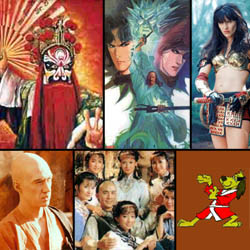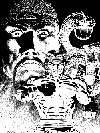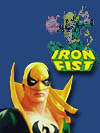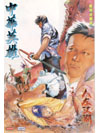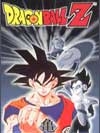
| Home | |||
| About Us | |||
| Overview | |||
| History | |||
| Women | |||
| Philosophy | |||
| Practice | |||
| References | |||
| Shaolin | |||
| Hsing Yi | |||
| Tai Chi | |||
| Bagua | |||
| Baji | |||
| Health | |||
| Other Styles | |||
|
|
|||
| Links | |||
| Directory | |||
| News | |||
artial arts can be found in comics, traditional chinese theatre and now on television. Each of those communication vehicles re-inforce the principles and philosophy of wuxia fiction. In addition, the training of the mind and the body is an important element within each story. Each story is a reflection of the public's fascination and interest in the martial arts.
This section highlights some of the memorable examples in each genre.
1. Wuxia - the Chinese Martial Arts Fiction
2. Comics, Theatre, Television (Asia, West)
3. Bruce Lee and Heroic Cinema
4. Sports, Blood Sports and the Mixed Martial Arts
5. Video Games and the New Arm Chair Warriors
Comics
uxia (ªZ«L) fiction can also be found in comics. The combination of great illustration and writing provides a compeling vehicle to communicate the Wuxia ideas. The following are examples of martial arts fiction in this genre.
Shang Chi, The Master of Kung Fu, is a Marvel character popular in the 1970's. He is the son of the Chinese warlord and would-be world conqueror Fu Manchu. He was trained to be the finest martial artist in the world, destined to be his father's assassin. His training in the martial arts taught him ethics and a strong sense of justice. In the end, he understood that he has to oppose his father's many evil schemes of world conquest. Iron Fist was created by Gil Kane in 1971 for Marvel comics. It is the story of Danny Rand, an orphan raised in an Asian temple who can channel this chi force through his hand, temporarily rendering the chosen extremity impervious to pain and injury - creating an "iron fist". Chung Wah Ying Hung (Chinese Hero), drawn by Ma Wing-Shing, was first published in Golden Daily newspaper in 1980. The monthly comic was published in 1982 and started the modern martial art comic in Hong Kong. Examples of this type of comic that is currently available includes: Storm Riders, Crounching Tiger - Hidden Dragon, Heaven Sword and Dragon Sabre and Weapons of the Gods. Japanese Manga such as Dragon Ball Z use many concepts found in wuxia. In Dragon Ball, Goku, Gohan and his friends train in the martial arts, practise to be virtuous and fights to save the world from destruction. Other great mangas include: is Kozure Okami ("The Lone Wolf and his Kid"), Blade of the Immortal even mainstream manga such as Sailormoon has elements of the wuxia tradition.
Martial arts are also an important element in traditional Chinese Opera. There are many different regional styles of Chinese Opera but they all share many similarities. Each have the same four role types: the female, the male, the painted-face, and the clown. Performances consist of "chang"(singing),"nian"(dialogue),"zuo"(acting)and "da"(martial arts). Emphasis is on costume and makeup rather than props or scenery. The operas often tell the same stories, though with various regional differences, such as alternate endings or additional characters. The actors must have a good flexibility, strength, balance, and control. This allows them to perform successfully the acrobatic moves needed for some roles. The actions in those operas is borrowed from the traditional martial arts but the actual motions of attacking and self-defense is changed to emphasize the aesthetics of the movements. Throughout history, traditional Chinese opera performers are also well known martial artists. For example, Leung Yee Tai, Wong Wah Bo and Leung Lan Kwai, from the “Red Boat” opera troupe was famous for their Wing Chun skills. Gini Lau (Eagle Claw Kung Fu) and Bow Sim Mark (Fu Style Baqua and Tai Chi) are continuing this tradition of combining theatre and the training in the martial arts.
References
[1] The Unofficial Handbook to the Marvel Universe, Danny Wall, 2000 [2003/03]
[2] The Second-Stringers of Marvel Comics! [2003/03]
[3] Comics One is a publisher dedicated to bringing Asian graphic novels and related properties to a wider American audience through innovative means of content and delivery [2003/03]
[4] Beijing Opera: The China Experience: ChinaVista [2003/03]
[5] The Chinese Opera, Peter Nepstad, 2000 [2003/03]
Copyright 2003
